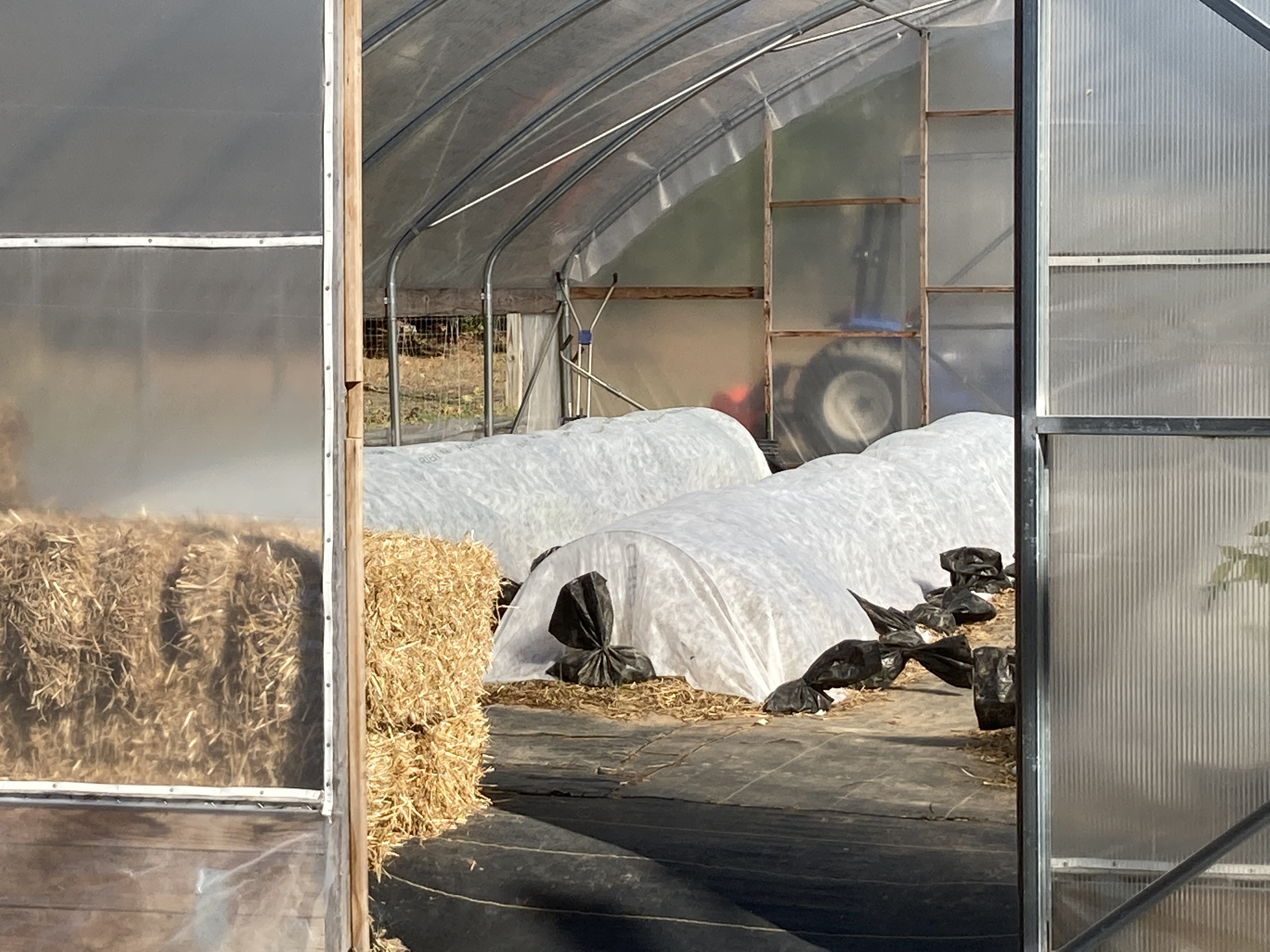Resource Library
Plant of the Week: Row covers for vegetable gardening
Vegetable gardening has, along with binge-watching Netflix shows and learning how to bake sourdough bread, become an important component of our pandemic lives. Because many of these new gardeners are men, and men just love gadgets, I thought it appropriate to discuss an old but simple gadget that can be used to extend the length of the growing season: row covers. In its simplest form, a floating row cover is suspended just above the plants, but more advanced forms include high tunnels. It’s your basic unheated greenhouse.

Covering plants to prevent frost damage is nothing new, but plastics have changed the nature of the game and made it easier to accomplish. Row covers, floating row covers or spun-bonded row covers are light weight, gauzy sheeting made from polypropylene or polyester fibers matted together into a breathable blanket. Two general grades are available; lightweight (around 0.5 oz./square yard) and heavy (2 oz./square yard) with brands such as Reemay (polyester) and Agribon (polypropylene) commonly offered.
Just like in bed at night, the thicker the blanket the warmer you stay. For frost protection, the light weight covering will provide about 2⁰F protection while the thicker blanket will provide 6⁰F or more. Bedsheets will provide about the same protection as the lightweight floating covering while grandma’s quilt will equal the protection of the thicker covering, but floating row covers are much easier to use. Clear plastic is useless in providing frost protection because the radiant energy released from the soil on those frosty nights passes right through the covering and never warms the air around the plants.
I thought I understood the environmental effects of floating row covers and how to use them in the garden. But, after reading a detailed study from Japan that plotted side by side temperature comparisons from spring until winter, I realized understanding row covers was more complicated than I first thought.
Because row covers are opaque and don’t allow as much long wavelength heat energy in as clear coverings, they can be used in the summer or the winter. Not surprisingly, air temperature and soil temperature are both warmer in the summer months under the coverings than normal ambient conditions. The covered spaces are 4 to 5⁰F warmer in the summer. A benefit for warm weather plants, maybe not for cool weather vegies.
As fall approaches, however, the balance shifts. The angle of the sun changes and the amount of radiant energy entering the closed system decreases. By November, the soil temperature under the covering is still warmer than that outside the covering but the difference is less. Surprisingly, the average air temperature under the covering is actually about 2⁰F cooler than outside air temperature. The author attributes this decrease to the absorption of heat energy from outside air by the covering itself as air infiltrates through the covering while the heat radiated by the soil is too little to replace what came in during the day with the angle of the sun at a more oblique angle.
This warmer soil and cooler air conditions might prove beneficial to overwintering spinach or turnip greens. Leaf lettuce, broccoli, onions and other cool season vegies — those that like it cool but are not really freeze tolerant — will benefit on the front end and back end of the growing season, but not usually gain enough protection to make it through the lowest temperatures of midwinter.
For the gadgeteer, there are lots of ways to modify this basic system to keep conditions beneath the row covers warmer, even in the coldest weather. What would one of those silvery space blankets do if placed over a row cover on cold nights? Or, maybe just doubling up on the row covering? Maybe adding a row of rabbit manure under the row cover and let it compost over winter. That might work. So many possibilities, so little time.
For more information about horticulture or to see other Plant of the Week columns, visit Extension’s Website, www.uaex.uada.edu, or contact your county extension agent. The Cooperative Extension Service is part of the U of A Division of Agriculture.